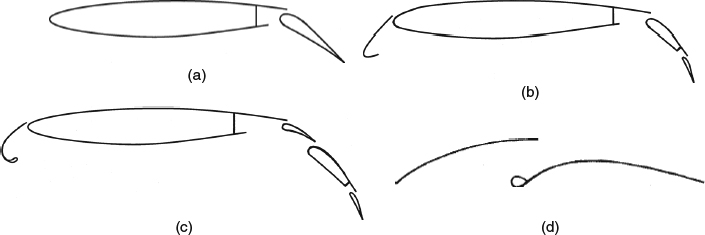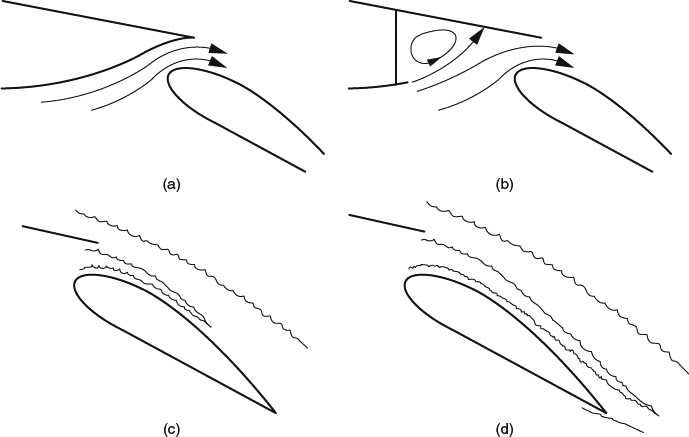7.4.4 Multielement Airfoils and the Slot Effect
Maximum-lift capability can be greatly enhanced if the airfoil has multiple elements with favorably configured slots between them. Figure 7.4.18 shows how slots are typically arranged on airfoils with slotted trailing-edge and leading-edge high-lift devices and between the mainsail/headsail combination often used on sailboats. Note that the slot widths (gaps) used in aeronautical applications are typically much smaller, relative to overall chord, than those used in cloth sails. As we'll see, however, the physical mechanism for the effectiveness of the slot is largely the same in both cases.

Figure 7.4.18 Sketches of multielement airfoils with slots, not to scale. (a) Single-slotted trailing-edge flap, as on many light airplanes. (b) Double-slotted trailing-edge flap and leading-edge slat, as on the Boeing 757 and Boeing 737NG. (c) Triple-slotted trailing-edge flap and a flexible (variable camber) leading-edge Krueger flap, as on the Boeing 747. (d) A mainsail/ headsail combination

Figure 7.4.19 Typical features of the flow through an effective high-lift slot. (a) Smoothly faired slot. (b) Slot with a sharp-cornered cove with flow reattachment upstream. (c) Confluence of the wake of the forward element with the boundary layer of the ...
Get Understanding Aerodynamics: Arguing from the Real Physics now with the O’Reilly learning platform.
O’Reilly members experience books, live events, courses curated by job role, and more from O’Reilly and nearly 200 top publishers.

